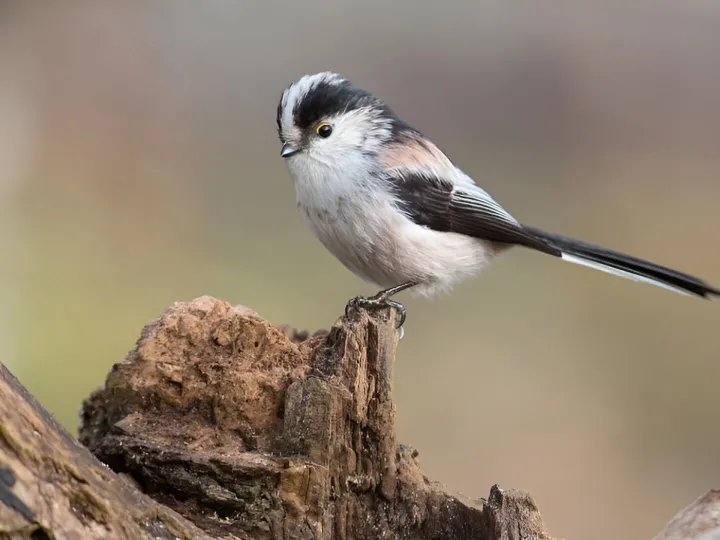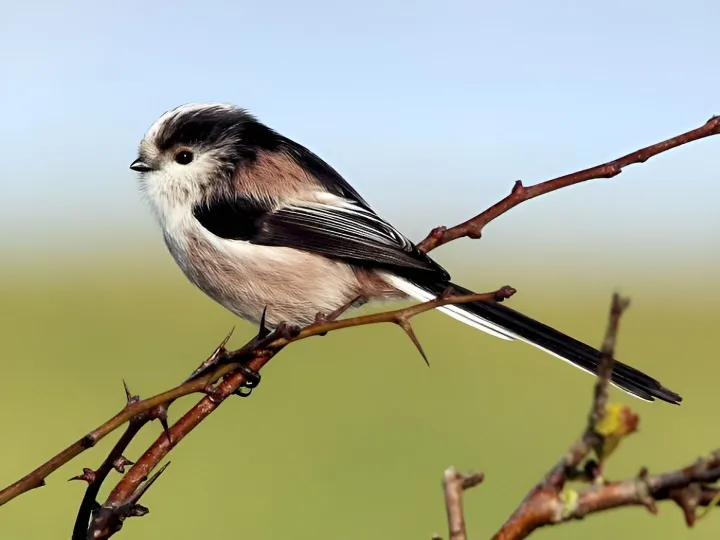The long-tailed tits are easily recognisable, having the classic tit-style body, but with a long black-and-white tail which makes up more than half of their total length. Their back is black, white and pink, the head white with a wide, black eyestripe, and their belly a pale pink. They are exceedingly gregarious and noisy birds, most often noticed in small, excitable flocks of about 20 birds, whose undulating flight is quite eye-catching. Their calls are an invaluable aid to locating and identifying these birds. When in flocks, they produce constant contact calls and are often heard before they are seen. There are three main calls: a single high-pitched "pit", a 'triple-trill' "eez-eez-eez", and a rattling "schnuur". The calls become faster and louder when the birds cross open ground or if an individual becomes separated from the group. Long-tailed tits are very active feeders, hunting out insects, spiders, and the eggs and larvae of moths and butterflies among the smaller branches and leaves of trees in the woodland.
Despite being so much longer than their close relatives, the great tit and blue tit, the long-tailed tit is still a very tiny bird. From July to February, during the non-breeding season, they form flocks (of both relatives and non-relatives) that roost communally, often clustering together to keep warm. When the breeding season begins, the flocks break up, and the birds attempt to breed in monogamous pairs. Males will usually remain within their winter territory, while females tend to wander into neighbouring territories to find a mate. The pair builds a beautifully domed nest out of moss in a bush or the fork of a tree. The structural stability of this nest is provided by clever engineering, involving a mesh of moss and spider silk. The tiny leaves of the moss act as hooks and the silk surrounding spider egg cocoons provides the loops, forming a natural form of Velcro. The tit covers the outside of the nest with hundreds of flakes of pale lichens for camouflage, while inside it lines the nest with more than 2,000 downy feathers to provide insulation and make a soft bed for the eight to twelve eggs laid there. Predation seriously reduces the number of fledglings that reach adulthood, but sufficient numbers do survive to maintain a stable population.

